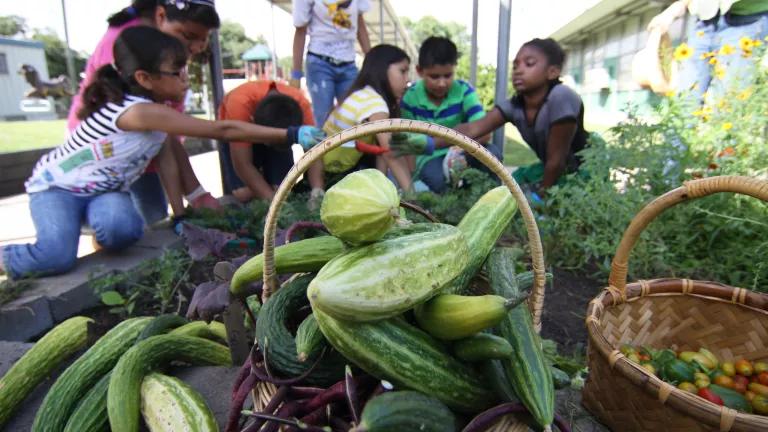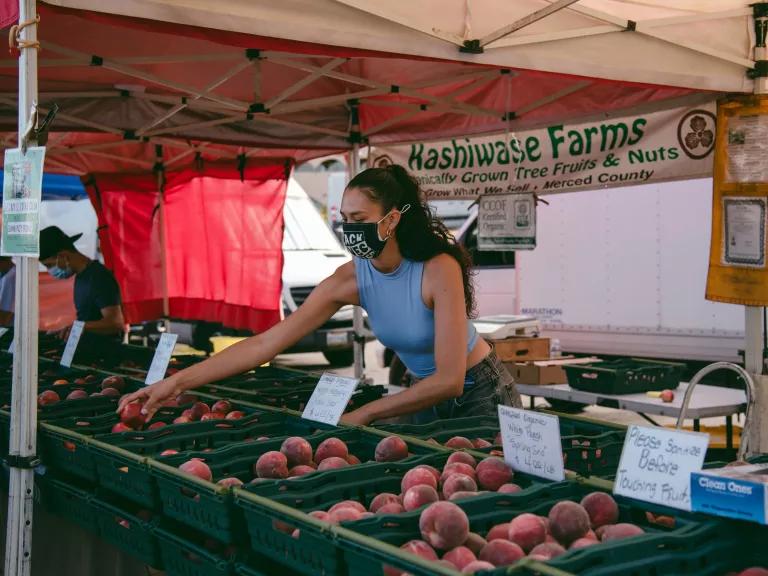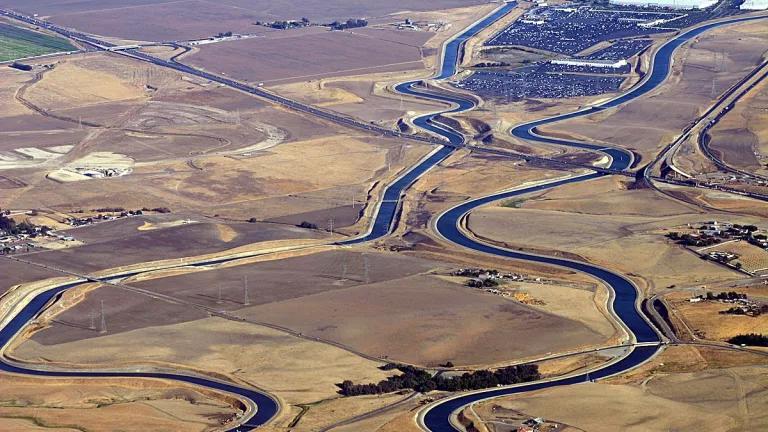CA Climate Bond Must Invest in Resilient Food & Farming Infrastructure
In the coming days, the Senate and Assembly must work together to craft a climate bond that includes substantial investments in food and farming infrastructure.

June 27 is normally a day of personal celebration (birthday champagne anyone?), but the date holds substantially more significance this year. The California Legislature is negotiating a multi-billion-dollar climate bond: June 27 is the deadline for the legislature to pass, and for Governor Newsom to approve, the bond for it to appear on voters’ ballots this November. One of the big, outstanding questions is how much the legislature will invest in a food and farming system that fights climate change and protects public health.
Thanks to the leadership of Assemblymember Lori Wilson and her Climate-Resilient Farms, Sustainable Healthy Food Access, and Farmworker Protection Bond Act of 2024 (AB 408), the Assembly has a clear vision for how to invest in California agriculture.
AB 408 was developed in partnership with the Food and Farm Resilience Coalition (FFRC)— 17 groups advocating for systems-level changes to California agriculture. This bond bill would make significant investments in infrastructure that will help the state fight climate change, protect farmworker communities, and build missing elements in our local and regional food supply chains.
By taking its lead on food and agriculture investments from AB 408, the Senate can help transform California agriculture.
The transformation is badly needed because agriculture plays a unique role in our climate crisis. Currently, the sector emits 8% of California’s greenhouse gasses and that number would be much higher if it accounted for emissions across the food system. Agricultural runoff pollutes waterways and chemical use poisons soil and harms people. Simultaneously, the extreme weather events, pests and diseases, and temperature fluctuations brought upon by climate change make farming and ranching harder and riskier, especially for those toiling in the fields day in and day out. On top of this, Californians still struggle to put food on the table while farmers and ranchers say they need more equipment and infrastructure to get healthy, nutritious food to markets.

Kiara Beita arranging stone fruit on display at Kashiwase Farms' stand at the Agricultural Institute of Marin's (AIM) Marin Farmers Market in San Rafael, California, on June 13, 2021. Run by third-generation Japanese-American farmer Steven Kashiwase, Kashiwase Farms grows almonds and stone fruit from a 65-acre farm in California’s Central Valley. The farmers market is one of the largest in the state, featuring nearly 200 local farmers and vendors.
Marissa Leshnov for NRDC
The COVID-19 pandemic broke our food system. Climate change continues to threaten food supplies. Farmworkers live in crowded conditions with little to no access to public services. The time is now to rebuild, and the investments outlined in AB 408 would mitigate agriculture’s emissions while incorporating health and resilience throughout the supply chain.
A healthy and climate-resilient food supply chain looks like this:
- Farmers and ranchers using practices that sequester carbon (e.g. cover crops and hedgerows), reduce their use of fossil fuel-based chemicals and fertilizers (e.g. organic agriculture), and harness renewable energy technology (e.g. agrivoltaics);
- Housing, air-conditioning, and resource centers for our essential farmworkers and their families;
- Year-round farmers markets, mobile markets, rooftop farms, and community gardens that help grow and provide healthy food to people in all corners of our state; and
- More processing facilities, cold storage facilities, warehouses, and distribution centers to help farmers and ranchers get their goods from fields to markets.
A more resilient food and farming supply chain will help California meet its ambitious climate goals. The California Natural Resources Agency recently published emissions reductions targets for agricultural lands that will require the state to ramp up investments in climate-friendly farming practices and figure out how to procure food grown on climate-friendly farms and ranches. Meeting these targets and procurement goals requires infrastructure that does not currently exist. The durable investments outlined in AB 408 belong in the climate bond: they will help meet our state’s goals while keeping healthy food accessible. In the face of threats posed by the climate, biodiversity, and public health crises, the Assembly’s comprehensive approach will net a significant return on investment for Californians.
Speaker of the Assembly Robert Rivas said a couple of years ago at the outset of the FFRC’s campaign, “It is time for a better food system in our state—one that is more resilient, more sustainable, and more just. [We need] an investment in our future that will help spur our economy and rebuild our food and farming systems to be more equitable for all Californians, while protecting our environment and our farmlands, so California’s agricultural industry can remain competitive for many decades to come.”
I agree, Speaker Rivas.
In the coming days, the Senate and Assembly must work together to craft a climate bond that includes substantial investments in food and farming infrastructure. There isn’t a moment to waste.




